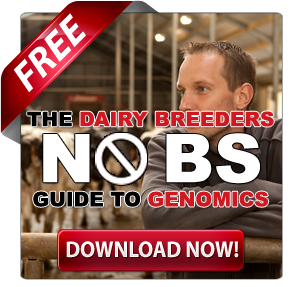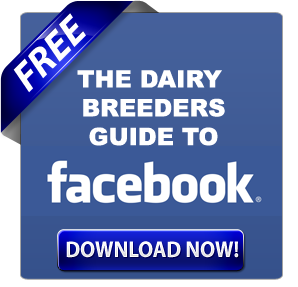A revolutionary AI-powered cow tracking system is transforming dairy farming! Japanese researchers unveil noninvasive technology that boosts milk yields by 15% and farm productivity by 30%. With 90% tracking accuracy, this multi-camera setup promises early disease detection and improved breeding management. The future of dairy is here!
Summary:
The AI-powered multi-camera system developed by researchers at Tokyo University of Science is set to change how dairy farms monitor their cows. This innovative technology non-invasively tracks cows throughout entire barns, using location data instead of complex images. It offers impressive 90% accuracy in tracking movements and identifying cows, helping detect early disease signs and manage breeding, which boosts milk production and herd health. While the initial cost is high, many farmers have reported breaking even within two to three years, achieving up to a 30% increase in productivity. This advancement improves both farm operations and animal welfare.
Key Takeaways:
- The AI-powered multi-camera system developed at Tokyo University of Science offers a non-invasive approach to track dairy cows, enhancing health monitoring and productivity.
- Overlapping camera views and an innovative focus on location data ensure accurate and consistent tracking across entire barns.
- The advanced system achieves approximately 90% tracking accuracy and an 80% Identification F1 score, significantly improving over traditional methods.
- Farm Adopting such AI systems can lead to increased milk yields, early disease detection, improved breeding management, reduced animal stress, and enhanced operational efficiency.
- Initial investment costs for these systems can be high. Still, many farmers experience a positive return on investment within two to three years due to increased productivity and reduced labor costs.
- Future developments aim to automate camera setup, enhance illness detection, and expand monitoring capabilities to support various dairy farm processes.

Japanese researchers have made a massive leap in dairy farm technology by introducing a pioneering AI-powered cow tracking system. Researchers at Tokyo University of Science (TUS) in Japan have made a significant breakthrough in dairy farm technology by introducing this innovative cow tracking system. Equipped with multiple cameras, this technology offers valuable insights into animal health and behavior, eliminating the need for invasive procedures.
Led by Assistant Professor Yota Yamamoto from the Department of Information and Computer Technology at TUS, the research team has designed a system that emphasizes location data over complex image features. This innovative approach promises more reliable health monitoring and efficient barn management, responding to critical challenges faced by the dwindling dairy industry even as the demand for high-quality milk continues to soar.
Revolutionizing Cow Tracking with AI and Multi-Camera Technology
The new system represents a remarkable advancement as it monitors dairy cows across the barn using multiple cameras. Dr. Yamamoto explains the distinctive approach as follows:
“This is the first attempt to track dairy cows across an entire barn using multi-camera systems. While previous studies have used multiple cameras to track different species of cows, each camera typically tracks cows individually, often the same cow as a different one across cameras. While some methods can track across cameras consistently, they were restricted to using two or three cameras that covered only a section of the barn.”
By leveraging overlapping camera views, the system ensures accurate and consistent tracking of dairy cows as they traverse different camera fields of view. Careful management of camera numbers and placements is crucial in enabling seamless monitoring and minimizing the effects of obstacles such as walls or pillars, which often disrupt coverage in intricate barn layouts.
Addressing issues that have traditionally hindered tracking technology, such as cows’ speckled fur patterns and lens distortions, these advancements have significantly enhanced accuracy rates compared to conventional systems.
Impressive Accuracy and Performance
During rigorous testing in a barn environment where cows moved closely together, the new tracking system showed remarkable performance:
- Achieved approximately 90% accuracy in tracking cows, as measured by Multi-Object Tracking Accuracy.
- Around 80% Identification F1 score for identifying individual cows.
These results mark a substantial improvement over conventional methods, which often struggled with accuracy, especially in crowded or complex barn environments. The system’s versatility is further highlighted by its ability to perform well in various situations, including when cows move slowly, stand still, or lie down.
A unique adjustment to the cow height parameter, set at 0.9 meters, ensured accurate tracking of cows in various positions. By setting this to 0.9 meters, lower than the height of a standing cow, the system maintained high tracking accuracy despite changes in the animals’ positions.
The following table summarizes key performance metrics and benefits of AI-powered cow tracking systems:
| Metric | Performance |
|---|---|
| Tracking Accuracy | ~90% (Multi-Object Tracking Accuracy) |
| Individual Cow Identification | ~80% (Identification F1 Score) |
| Milk Yield Increase | Up to 15% (from 22 to 25 liters per cow daily) |
| Overall Farm Productivity Boost | Up to 30% within the first year |
| Re-tracking of Missing Cows | Successful after 20-72 frames of occlusion |
| New Cow Detection | Successful within 30 frames |
Benefits for Dairy Farmers and Cow Health
The implications of this technology for the dairy industry are profound and far-reaching. Through the analysis of individual cow movements and behaviors, farmers can promptly identify health issues, leading to improved milk production and enhanced animal welfare. Dr. Yamamoto emphasizes the system’s potential:
“This method enables optimal management and round-the-clock health monitoring of dairy cows, ensuring high-quality milk production at a reasonable price.”
Key benefits of the AI-powered tracking system include:
- Early Disease Detection: Farmers can identify potential health issues much earlier than traditional methods allow by monitoring changes in cow behavior and movement patterns.
- Improved Breeding Management: The system’s ability to track individual cows consistently can help manage breeding cycles more effectively.
- Stress Reduction: Unlike invasive monitoring methods that require physical attachments to cows, this camera-based system is non-intrusive, potentially reducing animal stress.
- Enhanced Productivity: Better health monitoring and management will likely make cows healthier and more productive, potentially increasing milk yield.
- Operational Efficiency: The automated tracking system can reduce the need for manual observation, allowing farmers to allocate their time and resources more efficiently.
Real-World Applications and Industry Adoption
Adopting AI-powered monitoring systems is already yielding promising outcomes in the dairy sector. Farms utilizing similar AI-driven systems have reported a potential increase of up to 15% in milk yields, elevating daily production from 22 to 25 liters per cow. This demonstrates the tangible benefits that such technologies can bring to dairy operations.
Investment Considerations and ROI
While the benefits of AI-powered cow monitoring systems are clear, dairy farmers need to consider the investment required. Although the initial cost of installing such systems can be substantial, many farmers find that the long-term benefits outweigh the upfront expenses.
Key investment considerations include:
- Equipment Costs: The price of the multi-camera system and associated hardware.
- Facility Modifications: Existing barns may need to be retrofitted to accommodate the new system.
- Training and Support: Both farmers and staff require an adjustment period to adapt to the new technology.
- Maintenance and Upkeep: The long-term cost analysis should include regular servicing and potential repairs.
According to industry analyses, farms that incorporate AI into their operations see a 30% boost in productivity within the first year. Many farmers report breaking even on their AI investments within two to three years, and earnings increase thereafter.
Future Developments and Industry Impact
The research team is dedicated to enhancing the system’s capabilities and making future implementation more efficient. Future developments include:
- Automated Camera Setup: The team aims to streamline the installation process, making it faster and simpler to set up the system in various barn layouts.
- Enhanced Illness Detection: Researchers are working to improve the system’s ability to detect early signs of illness or other health issues in dairy cows.
- Expanded Monitoring Capabilities: Future system iterations could monitor the calving season and a broader range of processes, from the estrus period to postnatal care. This will enable the prediction of fertilization timing and management of calf health during the growing process.
These advancements could significantly impact the dairy industry, providing farmers with powerful tools to manage their herds more effectively and efficiently. Although the technology poses particular challenges, especially regarding initial investment and data management, the potential benefits of enhanced herd health, heightened productivity, and operational efficiency could be significant.
Continued research and enhancements to the system have the potential to offer dairy farmers globally tools to improve operational efficiency and deliver superior-quality milk to consumers shortly. The AI-powered tracking system represents a significant advancement in aligning increased dairy production with improved animal welfare, showcasing remarkable accuracy, noninvasive techniques, and future potential for enhancements.
Learn more:
- AI-Powered Health Monitoring: How Sainsbury’s is Improving Dairy Cow Welfare
- Exploring Dairy Farm Technology: Are Cow Monitoring Systems a Worthwhile Investment?
- Dairy Farming 2.0: Harnessing AI for Efficiency, Health, and Future Sustainability
 Join the Revolution!
Join the Revolution!
Bullvine Daily is your essential e-zine for staying ahead in the dairy industry. With over 30,000 subscribers, we bring you the week’s top news, helping you manage tasks efficiently. Stay informed about milk production, tech adoption, and more, so you can concentrate on your dairy operations.







 Join the Revolution!
Join the Revolution!




